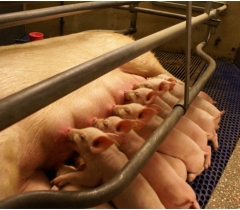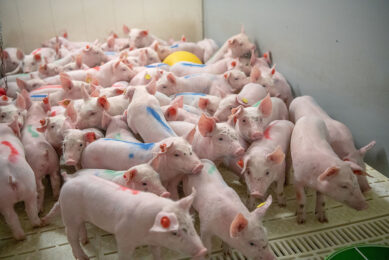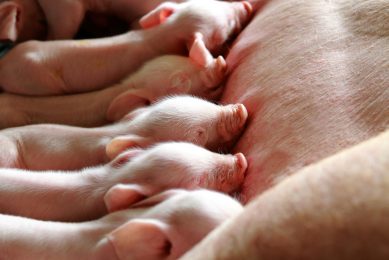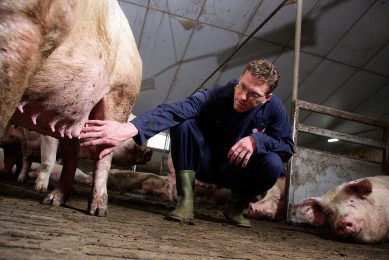RESEARCH: Both piglets and sows can benefit from milk replacers

Recent trials in the Netherlands have shown that supplying milk replacers to piglets during lactation is not only beneficial to piglets – but also to breeding sows.
In two experiments, it was observed that sows lose less weight where milk replacers are being fed to piglets during lactation. As the piglets grew faster through an extra energy source, they had to put less pressure on sows, resulting in the sows having to mobilise less body fat and fewer proteins.
The matter is very topical as sow milk production is increasingly limiting as numbers of piglets born alive are still growing in Europe.
Sows lose less weight
In one of the trials, carried out by animal nutrition company Provimi, a milk replacer was fed through RescueCups to suckling piglets. These cups were placed in all farrowing crates. An experimental group received milk replacer until day 16; performance was compared with a control group. Both groups also received creep feed.
Piglets consuming milk replacers were observed to grow faster than the control piglets – leading in the end to higher weaning weights and lower mortality rates. In addition, the sows whose piglets were fed milk replacer lost 6.4 kg less weight than sows from the control group. Comparable results were recently found by the University of Bingen, Germany.
The importance of sow weight after lactation was emphasised earlier this year in a research by Dr Lia Hoving (2012). She showed that if sows lose more than 10% of their weight during lactation, reproduction is compromised.
Milk replacer after weaning
In addition, in a recent experiment at Wageningen University (Van der Peet-Schwering and others, 2012), piglets received milk replacer for three days after weaning. Their performance was compared with piglets that did not.
Energy intake of piglets in the first week after weaning was twice as high in the milk fed group compared to the control group. This resulted in significantly higher growth rate for the milk fed piglets during the whole rearing period. At the end of the experiment the milk fed piglets weighed 23.9 kg, whereas the control piglets weighed 22.7 kg. (by Dr Albert van Dijk, Provimi)
Related websites:
• Wageningen University
• Provimi











